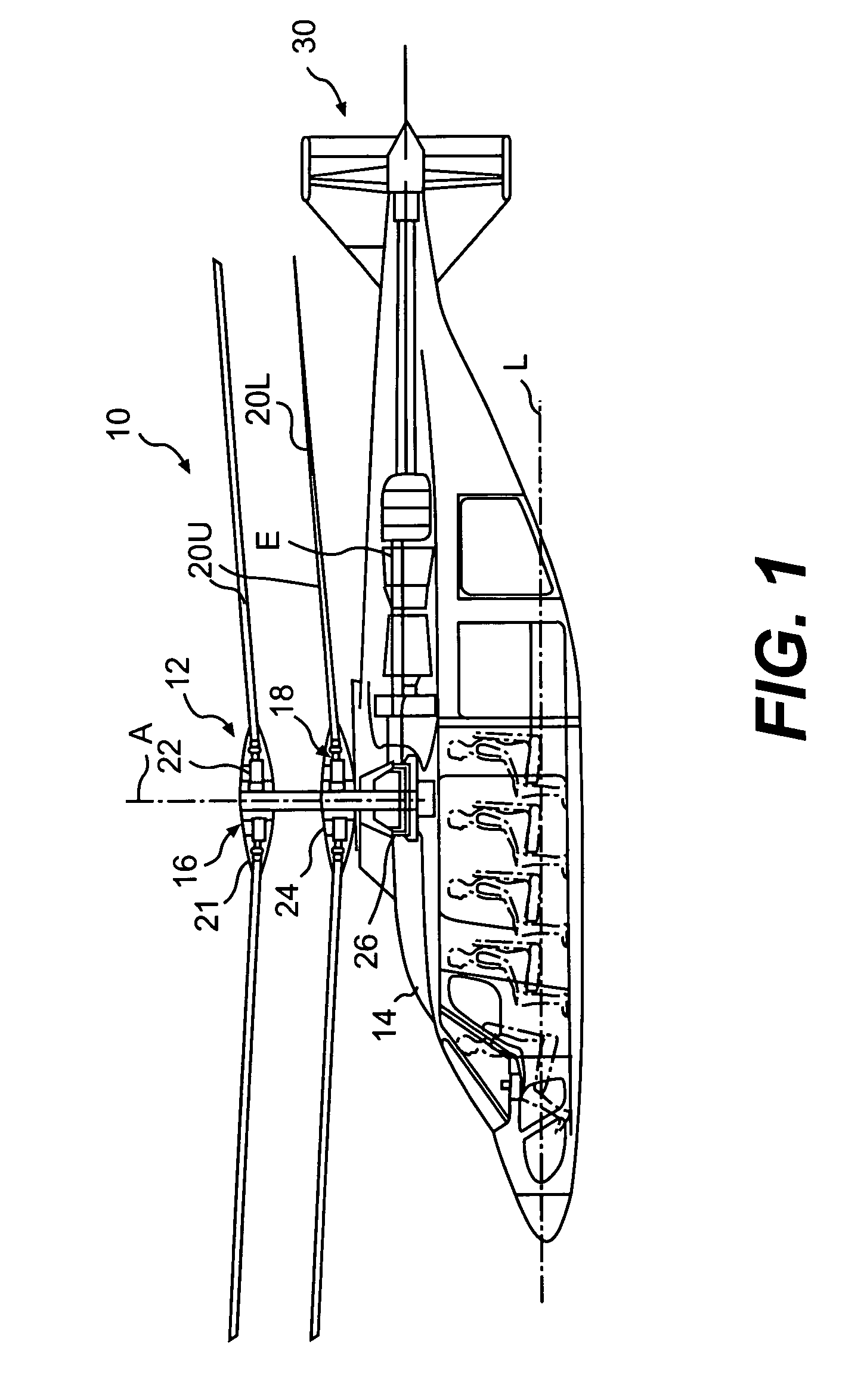Rotor blade twist distribution for a high speed rotary-wing aircraft
a rotary-wing aircraft and rotor blade technology, applied in the direction of marine propulsion, vessel construction, other chemical processes, etc., can solve the problem of minimal change in induced power consumption, and achieve the effect of minimizing drag, reducing retreating side blade drag, and optimizing rotor performance and flight efficiency
- Summary
- Abstract
- Description
- Claims
- Application Information
AI Technical Summary
Benefits of technology
Problems solved by technology
Method used
Image
Examples
Embodiment Construction
[0039]FIG. 1 illustrates an exemplary vertical takeoff and landing (VTOL) high speed compound rotary-wing aircraft 10 having a dual, counter-rotating, coaxial rotor system. 12. The aircraft 10 includes an airframe 14 that supports the rotor system 12 as well as a propulsive system 30 which provides translational thrust generally parallel to an aircraft longitudinal axis L. Although a particular aircraft configuration is illustrated in the disclosed embodiment, other machines such as single rotor helicopters, turbo-props, tilt-rotor and tilt-wing aircraft will also benefit from the present invention.
[0040] The rotor system 12 includes a first rotor system 16 and a second rotor system 18. Each rotor system 16 and 18 includes a plurality of main rotor blades 20U, 20L mounted to a rotor hub assembly 22, 24 for rotation about a rotor axis of rotation A. The plurality of the main rotor blades 20U, 20L project substantially radially outward from each of the hub assemblies 22, 24 and are s...
PUM
 Login to View More
Login to View More Abstract
Description
Claims
Application Information
 Login to View More
Login to View More - R&D
- Intellectual Property
- Life Sciences
- Materials
- Tech Scout
- Unparalleled Data Quality
- Higher Quality Content
- 60% Fewer Hallucinations
Browse by: Latest US Patents, China's latest patents, Technical Efficacy Thesaurus, Application Domain, Technology Topic, Popular Technical Reports.
© 2025 PatSnap. All rights reserved.Legal|Privacy policy|Modern Slavery Act Transparency Statement|Sitemap|About US| Contact US: help@patsnap.com



